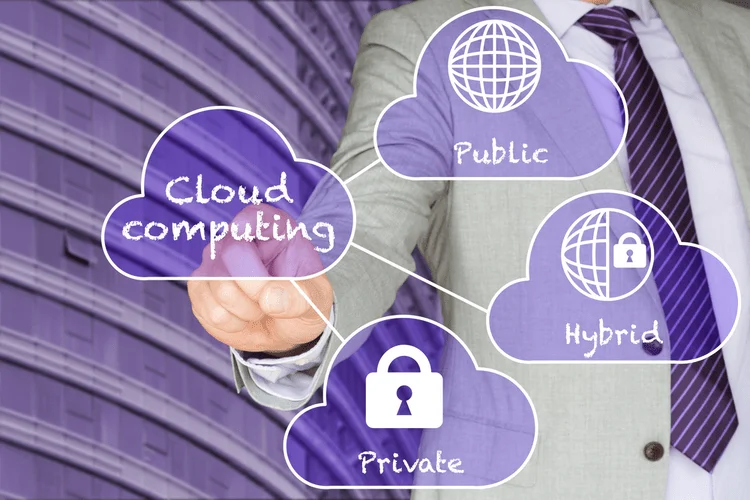Что Такое Ethereum? Полный Гайд По Eth
November 21, 2023What’s Cyclomatic Complexity: An Entire Guide
November 30, 2023Firstly, it cuts costs by reducing the need for physical hardware and upkeep. Cloud environments additionally supply improved scalability, permitting businesses to adjust resources based on demand. On-Premise environments are the standard approach the place purposes and information reside on physical servers inside an organization’s own amenities. This setup offers direct control over the infrastructure however can result in higher prices in hardware and upkeep. Application migration is greater than just a technical maneuver; it is a strategic transfer.
Set up a sequence of coaching classes to get employees across different teams and enterprise items in control on cloud ideas. If your utility depends on a singular supply, you ought to use Airbyte’s Connector Builder to construct customer connectors. Moreover, the AI Help performance within the Connector Builder speeds up the configuration process. Software migration can be a time-consuming course of, however with automation, repetitive migration duties could be done quicker with less danger of error. Poor communication not only leads to personnel frustration however can also result in pricey migration errors that have an effect on your small business operations.
Types Of Hypervisors And Migration Operations

Early involvement of related departments ensures all affected units are prepared for upcoming modifications. This proactive method minimizes disruption and ensures a smoother transition. Project timelines, budgets, and regulatory surroundings play significant roles in understanding constraints and desires. Documenting these necessities ensures all events understand and settle for what is required for migration.
Different applications can take totally different paths to the cloud, even throughout the similar expertise environment. Since the early days of cloud computing, builders have referred to those software migration patterns with names that start with “R.” Refactoring includes comparatively minor adjustments that assist optimize the appliance for use inside the cloud framework. Your DevOps staff might resolve that it is sensible for some functions to operate from the cloud. However, if not executed properly, it might result in expensive errors and knowledge loss.
- Correct configuration ensures that data transfers seamlessly to the new environment while sustaining accuracy and integrity.
- It also can occur if chained dependencies mean that the application has to stay in its current on-premises environment for a certain interval until different software program modules have been migrated.
- It offers you a full image of every thing that’s part of the applying you’re migrating.
Here are some software migration greatest practices to bear in mind as you support DevOps via the method. Your enterprise might have a method that outlines the standards for preserving an asset on-prem or moving it to the cloud. (And when you don’t, here is your signal to build one!) Some purposes could additionally be better left on-prem whereas others might benefit from a move to the cloud.

What’s An Instance Of Utility Migration?
Once you commit to migration, contemplate how you will migrate your software. Perhaps a phased cloud migration method is probably the most applicable path ahead, or possibly your small business should migrate its utility all of sudden. Before committing to software migration, identify https://www.globalcloudteam.com/ the enterprise reasons and use instances for migrating to a new surroundings. If there is not a good cause to migrate your application, you shouldn’t waste time and sources doing so. This strategy to application migration is used when organizations want to move applications to the cloud or off the cloud. To replatform an utility it must bear some tweaks to learn from a model new on-premises or cloud structure.
Utility migration instruments play a vital role in helping with tasks and processes. Tools from cloud service providers and specialist corporations assist validate migration and guarantee a easy transition. They offer functionalities like automating knowledge movement, ensuring compatibility, and maintaining knowledge integrity. With refactoring, or carry, tinker, and shift, you should use cloud-native options when you’re migrating applications.
Perform Application Migration
Speed Up your cloud migration journey with skilled consulting services from IBM. Discover how our options may help you transition to the cloud efficiently, or book a live demo to see the advantages of IBM Turbonomic in motion. Revision – Software revision takes refactoring a step additional, enacting wholesale changes to the application code and structure earlier than completing its migration into the cloud.
Simulating the migration in a managed setting helps establish and tackle potential issues before the actual transfer, decreasing dangers and ensuring success. Replatforming, also known as application migration “Lift, Tinker, and Shift,” includes making minor code adjustments to leverage cloud technologies effectively. This approach allows functions to attach extra effectively to the cloud surroundings, enhancing performance and scalability.
Establish which datasets are essential for the migration and determine how they will match into the model new system. This helps to get rid of outdated or unnecessary knowledge, reducing the migration workload and potential complications. Consider how the migration will impact end-users and whether or not additional coaching or course of adjustments might be required. Have Interaction stakeholders early to gather their input and tackle any concerns in regards to the transition.
This strategy additionally involves making considerable changes to the application’s code base. You have to be cautious when making changes to ensure that the integrity and functionality of the appliance remain intact. When implementing re-architecting, an application natural language processing is fundamentally redesigned or rebuilt so it better aligns with the target environment and its capabilities. The redesigning may involve decoupling components of the application so it could run independently in a brand new surroundings, usually using microservices, containers, or serverless functions. Migrating your software to a model new platform can expose it to threats if security measures are not properly configured or if the process bypasses present safeguards. For instance, if delicate information is transferred with out correct encryption or quickly stored in a less safe location, attackers can easily intercept and access it.
